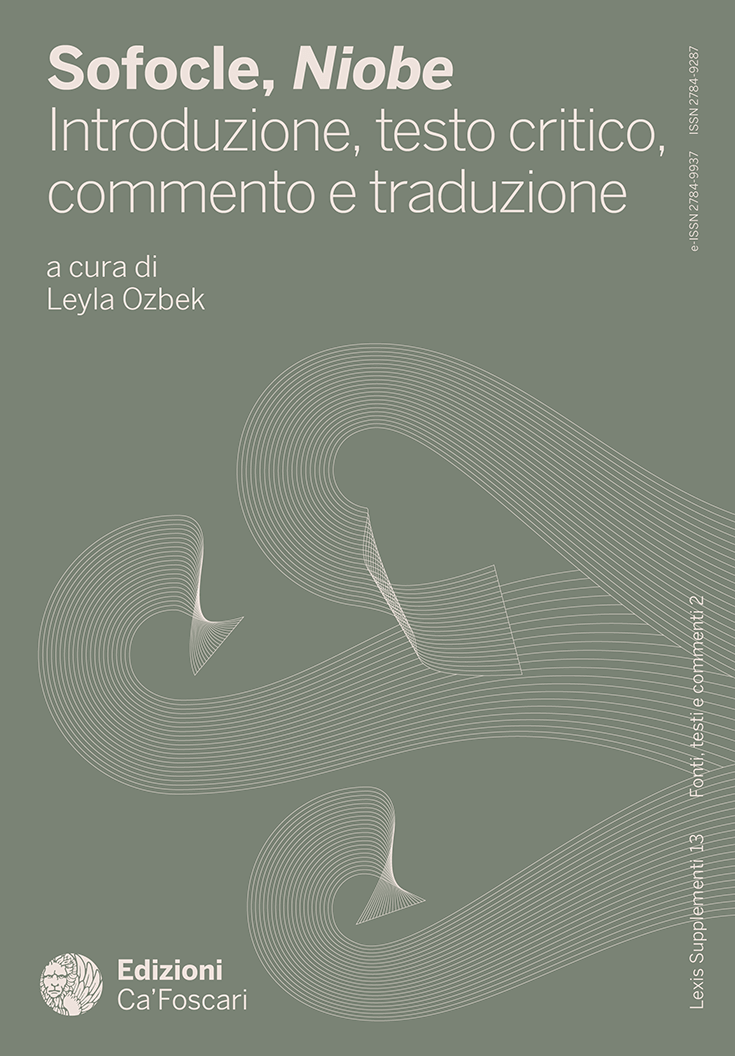
- search 566 views
- file_download 251 download
- keyboard_capslockmetadata
-
mark_email_readIscriviti alla newsletter
Sofocle, Niobe
Introduzione, testo critico, commento e traduzione
edited by
abstract
The myth regarding Niobe was already extremely famous in ancient times, and her actions still resonate today. She offended the goddess Leto by comparing her own offspring to Leto’s two children, Apollo and Artemis, and was punished by the goddess in a horrendous way, with the killing of her children. Her legendary mourning is already quoted in one of the most famous passages of the Iliad, during the encounter between Achilles and Priam. While Aeschylus, in his now fragmentary play on Niobe, represented on stage her silent mourning on the tomb of her children (a prelude to her metamorphosis into a forever weeping stone on Mount Sipylus), Sophocles focused his tragedy on the most shocking part of the myth: the killing of Niobe’s sons and daughters by Apollo and Artemis. This volume contains a new critical edition of Sophocles’ Niobe with a translation and a commentary. The text also includes fragments and testimonia that were not taken into account in the fourth volume of TrGF by Stefan Radt. The papyrus fragments and testimonies have been re-edited following direct personal re-examination of the original manuscripts. The introduction focuses on the content and mutual collocation of the fragments and testimonies, proposing a new dispositio fragmentorum (accompanied by a new numeration). This new disposition will shed new light on the overall reconstruction of the plot of the tragedy and of its staging. In the commentary, testimonia and fragments, in which the text is preserved in full or can be at least partially reconstructed, are followed by an Italian translation. The translation is followed by a general introduction in which the content and the context of each fragment and testimony are given, together with a metrical analysis of the passage (in the case of poetic fragments) and a commentary that examines textual and papyrological problems, as well as aspects of vocabulary, grammar and syntax, trying also to reconstruct key scenes of the play and their staging. Visual representations of Niobe’s myth that are useful for understanding important details of the story are discussed and examined within the commentary. The volume is closed by an appendix that considers four fragments to which Radt refers at the end of his introduction to the Niobe. These fragments have been attributed to this play in the past but should not be considered as part of it now, either because their attribution is erroneous or, at best, because it is extremely doubtful.
-
Keywords keyboard_arrow_down
Table of contents
- search 15 view
- file_download 8 download
- search 18 view
- file_download 10 download
- search 21 view
- file_download 15 download



